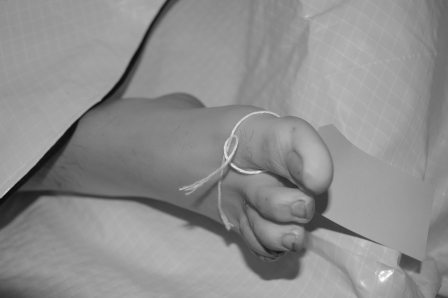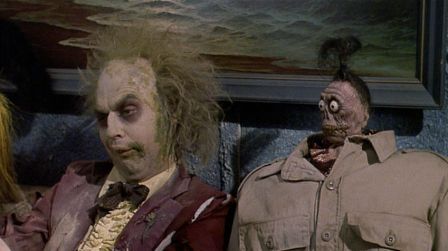There’s nothing in this world that can be compared to entering an abandoned house in mid July, in the south, to begin working a murder case. If the stifling heat, humidity, and smell of decomposing human flesh and organs don’t get to you, well, the flies, maggots, and other creepy crawlers certainly will. Without a doubt, it’s a full-on attack of the senses. But, it’s a job that falls into the laps of homicide cops—it’s what they do—and it’s a job that requires a special skill set. Not to mention a stomach made of cast iron and steel plating.
But, once you’re past the stench, gore, fly-swatting, and overall feel of ickiness, solving murder cases are a bit like writing crime novels … sort of.
Writers typically begin their stories knowing the identities of the murderers du jour, right? Protagonists typically work toward a “killer” ending to the story in which they travel, while their creators provide clues along the way that help their fictional heroes and readers solve the carefully plotted crimes.
Real-life detectives begin their journeys with an initial report that’s a written introduction to the basics—victim’s name, location where crimes took place, weather conditions, dates, times, responding officers’ names, time of arrival of the medical examiner, witness names and statements, if any, etc. This information, much like the very first Post-it note of a plotting author’s outline launches a story into a convoluted journey to the final page of a book, provides the starting points for investigations. And, those initial police reports often serve as guides that determine which direction the investigations should follow.
Remember, no two investigations are the same!
What follows the reading and studying of the initial police report or, an author’s first Post-it note, is an extremely detailed and meticulous prying, pawing, digging, and rummaging through each and every aspect of all the twists and turns and potential characters/suspects. No stone is left unturned, and no potential piece of evidence is left unexamined. For detectives, this often results in lots of long hours without sleep, meals, or time to rest. For writers, this means tons of sticky notes placed in all the right places, tons of research, police ride-alongs, and attending the fabulous Writers’ Police Academy.
When I approached a case where the suspect’s identity was unknown, and clues and information were scarce or non-existent—after collecting physical evidence—I often found it helpful to begin by first eliminating people who could NOT be involved, such as the people who had solid, unquestionable alibis. Then, I’d eliminate the folks whose innocence was proven by physical evidence (fingerprints and DNA didn’t match, etc.). It was often the last man or woman standing who committed the crime.
Writers, in lieu of using actual evidence to eliminate characters/suspects, they develop fictional evidence to do the same. And when something doesn’t seem quite right with a scene or character, well, the writers then simply removes a sticky note here and there and toss them aside. However, both detectives and writers typically file any discarded information in the event it’s needed at a later time. And, like writers, cops often find that information gained/gathered in one investigation just may be valuable in the next.
To Step Into a Murder Scene is Like …
So let’s open the door to the spooky house at the end of your street—the old Victorian that’s been empty for two years and is now surrounded by waist-high weeds. The once beautifully manicured lawn is now a graveyard for litter and other garbage left behind by transients and the kids who toss their empty fast food wrappers and plastic soda bottles over the rusted chain-link fence. Window panes are broken and many of shingles have fallen from the roof, leaving behind patches of tar paper and rusted nails.
For months now you’ve seen a homeless man going and coming, but this morning you realized that he hadn’t been around in the past two weeks. And there’s that strong odor. Like something is … dead.
So you call the police and the next thing you know your neighborhood is overrun by patrol cars and crime scene tape. You even heard one officer say something about murder.
Inside the “spooky” house, detectives are doing what they do best. They’re checking all the boxes on their mental checklist. And now their focus is on the victim.
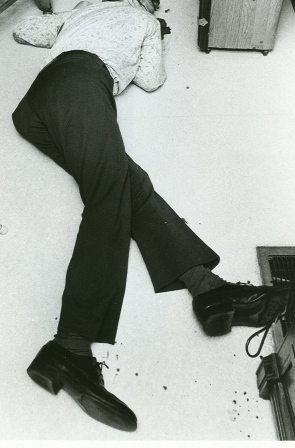 The Effects of Death on the Human Body
The Effects of Death on the Human Body
Prior to the removal of a body from the crime scene, homicide investigators should note (and photograph) the presence of each of the following in his/her report:
1) Livor Mortis/Lividity (color, location, blanchability, Tardieu spots, other coloring). Are these consistent or inconsistent with the current positioning of the body?
Remember, lividity is the pooling of blood/purplish staining of tissue at the lowest portions of a dead body, caused by gravity. Livor continues to form for up to 8 – 12 hours after death. This process can be slowed to as much as 36 hours in a cool environment, including a morgue cooler.
To test for blanchability, a death investigator uses a finger(s) to push against the flesh. The pressure forces blood out of the capillaries in that area, causing the flesh to present as much lighter in color. If the pressure does indeed cause a change in skin color, the flesh is blanchable. This tells the investigator the body is still within the lividity period, meaning the victim died sometime within the past 12 hours, or up to 36 hours in cool surroundings.
You can try this on your own skin. Use a finger to apply pressure to the back of your hand. Release the pressure after a second or two and you’ll see the change in skin color (obviously you’ll use the finger of one hand to press against the skin on the back of your other hand). By the way, if you needed that instruction, well, the warning to remove Pop Tarts from their wrapper before heating are probably very important to you. And, if there was no change in your skin color, well, I hope your life insurance policy is up to date.
Tardieu spots are dark, circular areas—capillary ruptures.
2) Rigor Mortis
Muscles contain bundles of long, narrow cells. While we’re seated at our computers reading blogs and watching goofy videos, our muscles are, for the most part, at rest.
While resting, our muscles pump out calcium ions which build up electrical potential (energy). Then, when we’re ready to make that run to the mailbox to retrieve the latest royalty check, a nerve impulse causes those ions hook up with actin and myosin filaments and the muscles contract (become tighter). They remain in that state until adenosine triphosphate (ATP) binds to the myosin, and before you know it the muscles once again relax.

Got it now? No, well, don’t worry. All we need to know is that ATP has an obsession with oxygen. It absolutely has to have it to survive.
Actually, the body needs oxygen to produce ATP. Therefore, when a person stops breathing (no oxygen) the body ceases to make adenosine triphosphate. Without ATP our muscles can no longer relax. And when the muscles can’t relax, what happens? Right, the body stiffens, and that, my writer friends, is called Rigor Mortis.
3) Degree of decomposition (putrefaction, adipocere, mummification, skeletonization, etc.). Everything affects decomposition, from air temperature to animals and insects to shellfish, fish, alligators, snakes, and turtles, when the body is in water. Even soil types and clothing can affect the rate of decomposition. Interestingly, newborns who have not yet been fed, decompose slowly since the body is basically sterile. However, an injury or being fed will cause a newborn’s body to decompose more rapidly.
a) Putrefaction – the final stage of decomposition. Presents as discoloration of tissue, disfiguration, liquefaction of tissue, bloating due to gases forming in the tissue and organs.

The general order of putrefactive changes are as follows:
First to go are the larynx and trachea, followed by…
– stomach, spleen, and intestines
– lungs and liver
– brain
– heart
– bladder, uterus, kidneys
– skin, tendons, and muscle
– bone
*The prostate resists putrefaction for a long time.
b) Adipocere – a waxy, soap-like substance that’s sometimes formed during decomposition. Normally caused by moist or damp conditions surrounding the decomposing body.
D. Insect and animal activity. Obviously, insects and animals can and do consume body parts. Animals may also scatter human remains, sometimes making the murder scene a bit more difficult to understand, at first look.

E. Scene temperature. Death investigators make note of the ambient temperature at the location of the body, and the method used to obtain it.
F. Description of body temperature. Is it warm to the touch? Is the flesh cold, or frozen.
It is extremely important to preserve the security of the body. Remember, the body is more than likely THE most important piece of evidence in a murder case. Investigators should oversee the labeling, packaging, and the removal of the remains by the M.E’s personnel, or EMS, etc. An  identification tag should be attached to the body to prevent any mix ups later, at the morgue (yes, this has happened, and on more than one occasion).
identification tag should be attached to the body to prevent any mix ups later, at the morgue (yes, this has happened, and on more than one occasion).
Finally … No, police detectives do NOT use thermometers of any type, including rectal thermometers, to check the temperature of a dead body. It is not in their job description to do so. Yes, I once read the rectal thermometer thing in a book. So, no, no, and NO!
By the way, the image at the left is of a grilled pork chop. Had your stomach turning for a moment, huh?
*Remember, laws and procedure differ across the country. What happens in San Francisco or L.A. may be, and likely are, entirely different in Richmond or Baltimore or Dallas or Phoenix or Denver or Kansas or ….
*The black and white images contained in this post are from an actual crime scene, the largest mass family murder to occur in the U.S. It’s a case I featured in my true crime tale, Murder on Minor Avenue.
As part of my research prior to writing the story I visited the scene(s), interviewed dozens of people involved in two cases, including police detectives, neighbors, prosecutors, judges, family members, etc., and I visited the gravesites of the slain. Murder on Minor Avenue was published in an anthology called Masters of True Crime: Chilling Stories of Murder and the Macabre (edited by R. Barri Flowers) Publisher – Prometheus Books.







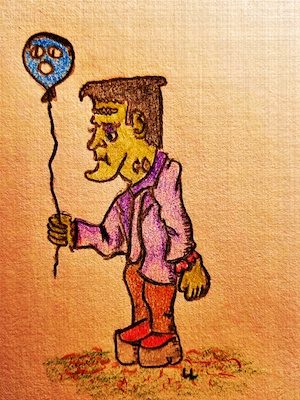
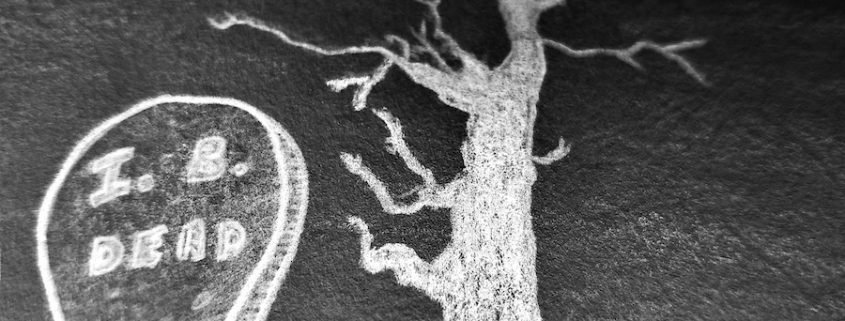
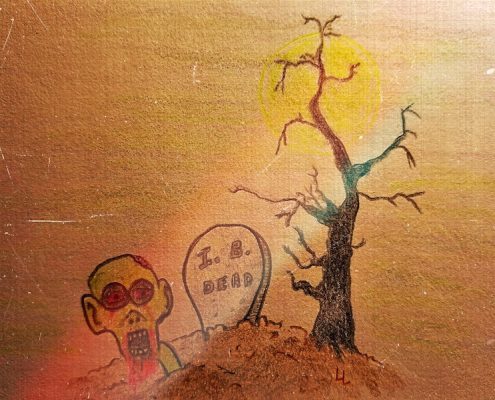


 star and host of the Investigation Discovery (ID) channel’s TV series, THE CORONER: I SPEAK FOR THE DEAD, now in its second season.
star and host of the Investigation Discovery (ID) channel’s TV series, THE CORONER: I SPEAK FOR THE DEAD, now in its second season.


